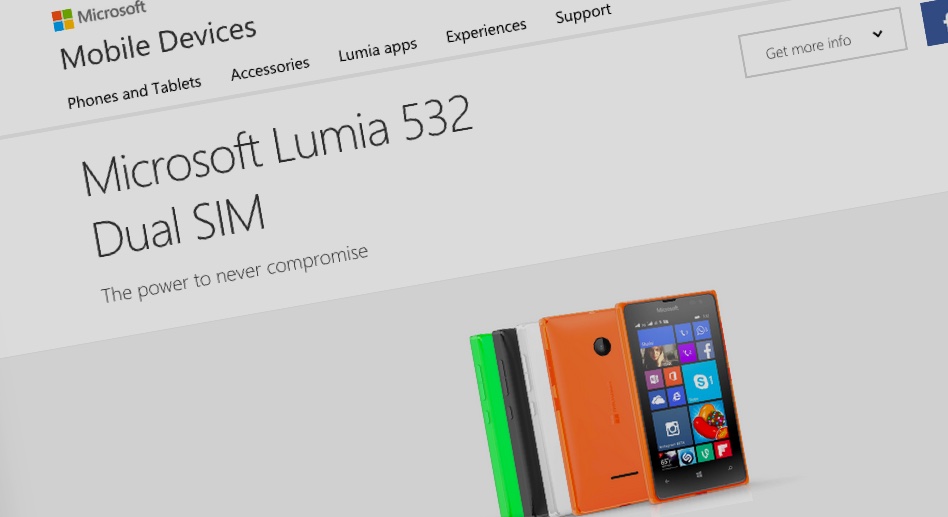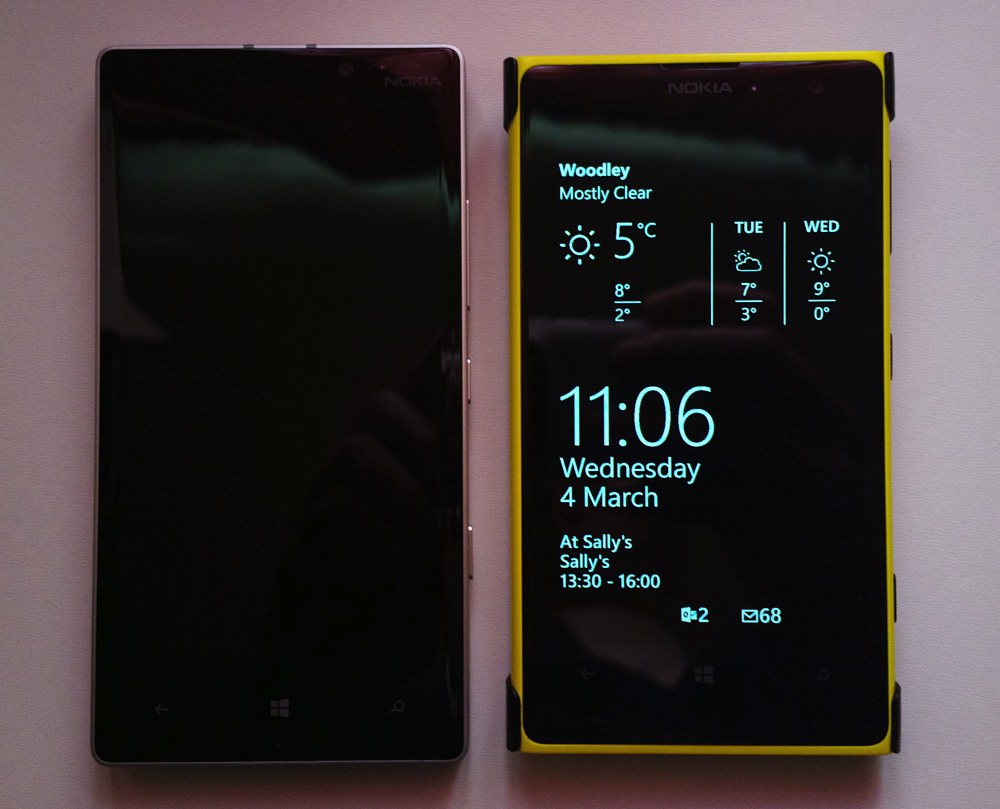
[References: 'The power to never compromise' (Lumia 532), 'Never settle' (OnePlus One)]
This is obvious if you think about it, of course. How can you have something with a 4000mAh battery and ‘ultimate battery life’ if you’re also going for 6mm ‘thinnest phone ever’ and a blazing 2.8GHz processor, plus you want to hit a £250 price point?
But the same compromises have to be struck in other component areas too. Ever since the first (Symbian) smartphones appeared, back in 2002 (or so), compromises started to become a ‘thing’. When phones were ‘dumb’ and not much was expected of them, you could basically do anything you wanted with the hardware. Large, small, bendy, hinges, whatever - just as long as you could fit in a 2.4" screen and earpiece.
But then we started to require a camera. And speaker. And a larger screen. And a memory card slot. And occasionally even a QWERTY keyboard. Hey presto, a device that is chunky as heck and with battery life that seemed an order of magnitude lower than the feature phone that preceded it.
We’ve all seen the outcry when a manufacturer (e.g. Nokia) produces a new phone that seems ‘crippled’ or ‘compromised’. Why can’t we have all the ‘best bits’ in the one device? Just for once?
Quite apart from the timescales involved (still over a year from design to launch, even in 2015), there are a number of major constraints involved in a new smartphone design:
-
The physical elements and how well they can be squeezed in (e.g. battery, camera, versus thickness, which elements need to be user replaceable/expandable?)
-
Size (e.g. who's the phone aimed at, how big can it go before the size puts people off?)
-
Cost (usually a significant factor, and critically on the half of all mobile users across the world who are not on subsidised contracts)
-
Market positioning/expectations (a combination of everything - size, shape, design, colour, functionality, and so on, the iPhone is a good example of a device which is compromised in positioning and cost at the other end of the spectrum, attracting a certain wealthier section of the phone-buying public)
-
Component availability (in an ideal world, everything would be able to be ordered in unlimited quantities, but in the real world there are significant constraints, especially if a company is hoping to make and sell several million - let alone tens of millions - of a device)
-
Software availability and constraints (i.e. the OS might not support everything you plan to include, e.g. screen resolution, connectivity)
-
Sufficient planned manpower to develop and support the device throughout its lifetime
Add it all together and you can see that every smartphone on the planet represents a compromise of some kind. From the Windows Phone world, it's tempting to pick out the Nokia Lumia 1020 as one which was true to its vision and not compromised, at the risk of a relatively large camera island. But in fact even the 1020 was compromised - in price (it was too expensive), in chipset (it used the older Snapdragon S4 design), and in size (the Nokia 808's camera was better - but thicker).
The most obvious example from the last year or so, again in the Windows Phone world (this being AAWP), is of course the Lumia 930. Its 1080p screen was pentile - itself a compromise (lower detail versus longer AMOLED display lifetime), but Nokia was not able, seemingly, to be able to plan to source enough 1080p screens with the necessary 'display memory' for the characteristic Nokia flagship 'Glance' feature. As a result, the 930 was compromised and shipped with 'dumb' screens that couldn't be lit up in the usual way.

Down at the bottom end of the Windows Phone world, it's all about cost and market positioning, we've seen that the Lumia 530 was a spec cut too far (512MB RAM, no FFC, poor display, low internal storage, etc.), the Lumia 630 before it was also compromised (512MB RAM, no front facing camera) and we're really only now seeing balanced budget Lumias appear, devices like the Lumia 535 and newer 640, etc.
Get the compromise wrong, of course, and you've got a 'lemon'. I just mentioned the Lumia 530, but the recently-reviewed Yezz Billy 4.7 was also a great example of this - a device which looked great and felt great, yet which was massively compromised in terms of how the chipset was integrated into the other components, not least the display and camera. With the result that video playback was terrible, even of its own captured media, resulting in the Camera application having to be 'hobbled' to capture at a lower resolution. Yezz also compromised in the amount of software development work, shipping an implementation of the Windows Phone OS and interface that was half baked, at best.
The HTC One M8 for Windows also springs to mind - this was something of a compromise from the start in the Android world, with a low-resolution main camera and gimmicky depth of field effect supplementary sensor, and the Windows Phone version inherited at least the option to use all this - thankfully HTC's new One M9 has a traditional high megapixel camera and no gimmicks, and maybe we'll get a Windows Phone variant soon. Here's hoping.

The move to Quad HD (QHD) screens in the Android world has itself represented the latest cutting edge compromise, of course. Just as processors are getting faster and batteries bigger, go make them both drive double the number of pixels. Gah. I mention this as HTC for the M9 (and maybe M9 for Windows in the future) also made another sensible design decision - to stick with a 1080p display and accept better performance and battery life.
A popular game in geek circles, around a pint of beer or on a podcast, is to chat about what one would like in an ideal smartphone, i.e. what features, specifications and components. And while there's no harm in wishing for everything, back in the real world the dreaded 'c' word - compromise - will dominate what companies actually produce for us to buy.
We may not always agree with the compromises and decisions companies like Nokia, Microsoft and HTC make, but hopefully we can now cut them a little slack - designing, building, testing, releasing, distributing and supporting a smartphone is a herculean task, if done properly.
PS. Ah, but what about Project Ara in the Android world, someone will interject? Even that, in which components are essentially bolted into a backplane, is massively compromised - none of the components will work quite as well (integration, performance, software drivers, etc.) in an Ara phone as dedicated parts would in a more holistic design.
PPS. If you can think of a phone which you reckon isn't compromised at all, then ask yourself whether it has a proper (Xenon) flash for its camera or a QWERTY keyboard, to name but two. See, not as easy as it looks, this smartphone design business!
